VMware, AWS Bury The Hatchet: Details Of Their Blockbuster Cloud Partnership

Public Or Private Cloud? Yes.
VMware and Amazon Web Services last week set aside years of debate on the best way to build cloud infrastructures with a new strategic partnership aimed at enabling VMware technology users to move their workloads to the AWS public cloud.
That partnership has led to the introduction of a new platform called VMware Cloud on AWS that allows VMware's complete software-defined data center offering to run on both private and public clouds.
With VMware Cloud on AWS, customers will be able to run applications across VMware vSphere-based private, public and hybrid cloud environments using existing VMware software and tools for a full range of storage, database, analytics and other services.
While the new VMWare-AWS relationship is still a work in process, it has advanced the public-vs-private-cloud conversation and opened a big door for opportunities in private clouds.
For a look at the details behind the new relationship, turn the page.
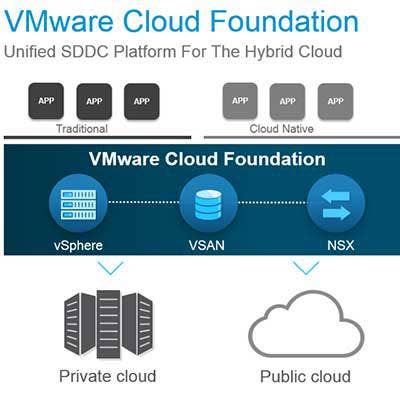
The Basics
VMware Cloud on AWS is based on VMware Cloud Foundation, VMware's software-defined data center platform that integrates VMware vSphere server virtualization, VMware Virtual SAN (VSAN) software-defined storage, and NSX software-defined networking into a unified platform.
VMware and AWS worked together to develop the VMware Cloud on AWS offering which will run on bare metal EC2 instances in the AWS public cloud. To bring VMware Cloud on AWS, the service will be optimized to run on purpose-built EC2 instances to deliver VMware Cloud Foundation.
Unlike VMware's relationship with other public clouds like the IBM SoftLayer Cloud, where the sales and support is handled by the public cloud partner, VMware will bring VMware Cloud on AWS to market via its direct sales relationships or via channel partners who shortly will be able to get certified for the solution.
Available as a beta in early 2017, VMware Cloud on AWS is slated to be available in mid-2017.
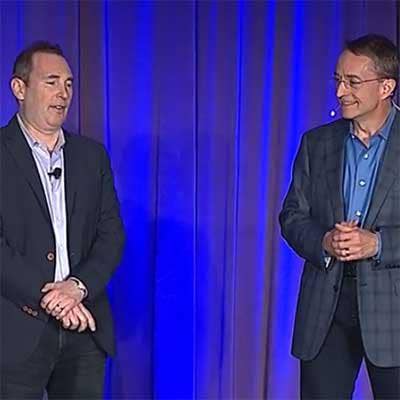
Rivals Become Partners
While rumors of the news had been circulating the week before, the actual unveiling of the new relationship was handled on-stage by Amazon Web Services Chief Executive Andy Jassy (left) and VMware CEO Pat Gelsinger (right).
Jassy started off the event with a welcoming message that alluded to the two vendors' traditional rivalry.
"Pat, it's funny seeing you here," he said.
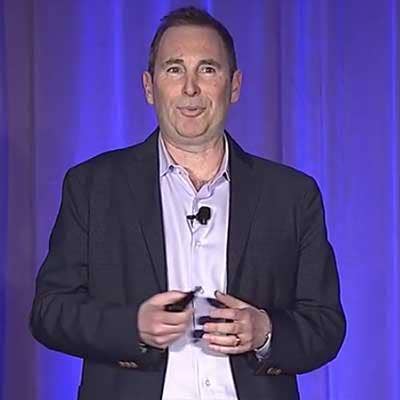
Moving Away From The Public/Private Cloud Conversation
Jassy said confusion in the enterprise over what was meant by "hybrid cloud" led businesses to wonder if they needed to make a "binary decision" to run all their applications either on-premises or in AWS.
"Of course, you don't have to make that binary decision," he said. "You can run some of your applications in the cloud and some of them on-premises, and some of them can interact together."
Amazon has helped with the launch of services like Virtual Private Cloud, Direct Connect in a storage appliance, and Identity Federation to make AWS a hybrid cloud-friendly infrastructure, Jassy said. "And most of the big hybrid implementations today are built on AWS and various on-prem data centers," he said.
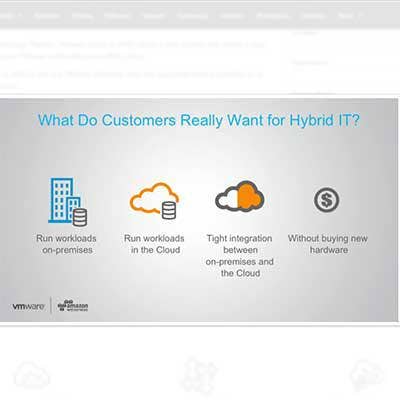
Building Hybrid Clouds With Existing Infrastructure
When moving to the cloud, it makes sense for enterprises to want to their on-premises management software and tools in AWS as well, Jassy said.
"You want that very tight, seamless integration," he said. "But you also want to be able to do so without having to buy more hardware, or worse yet custom hardware. Because companies are not actually looking to add new hardware"
The vast majority of enterprises are used to VMware's software and tools to manage their on-premises infrastructure, Jassy said.
"Because AWS and VMware did not provide a seamless experience and a seamless opportunity to run that same software on-prem and in AWS, [enterprises] in fact did have to make a binary decision which was, either I use the VMware software--and it's hard to actually use AWS in the public cloud--or I use AWS in the public cloud and have to leave behind the VMware software. And understandably customers didn't like that decision."
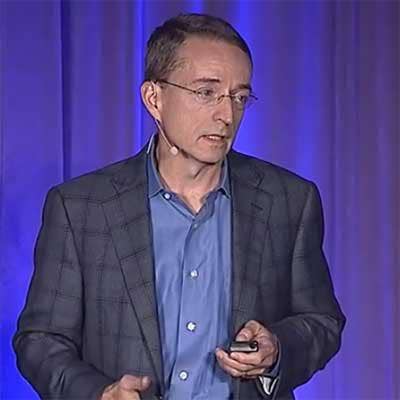
Addressing Disparate Customer Requirements
Gelsinger said some customers have largely on-premises environments that require flexibility, some want to get out of the data center altogether while maintaining the enterprise capabilities of VMware, and others want flexibility across those environments in a hybrid manner.
"As we engaged our customers and talked about what we can do together, we were quite excited because we saw that we could bring together the best of both worlds," he said. "We're thrilled to announce VMware Cloud on AWS, the best of both worlds. Bringing together that dynamic flexibility combined with that enterprise-grade SDDC [software-defined data center] into a single solution."
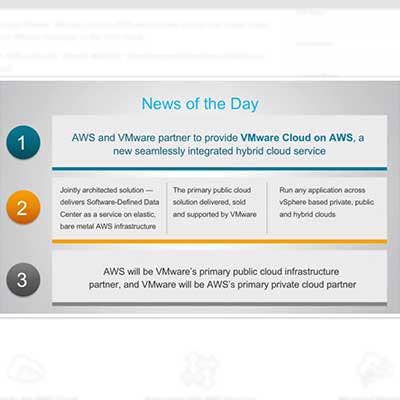
Best Of Both Worlds
VMware Cloud on AWS represents the best of public cloud with the best of private cloud coming together to deliver a seamless hybrid service that VMware will bring to market, Gelsinger said.
VMware and AWS early this year challenged their developers to create a seamless experience across those two environments, he said. "We said how can we integrate our solutions together in a complete software-defined data center: the storage, the network, the compute, the management, for a truly elastic-capable infrastructure service combining the SDDC with the Amazon capabilities on a global basis," he said.
The result is the beginning of what Gelsinger said will be the first of a rich cycle of innovation, Gelsinger said. "AWS is VMware's primary public cloud partner, and VMware is AWS' primary private cloud partner," he said. "The best of both worlds coming together."
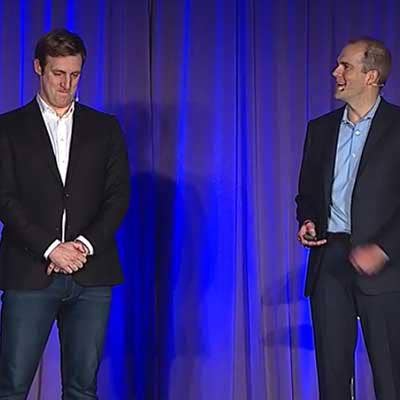
Demonstrating VMware Cloud On AWS
Matt Wood, general manager of product strategy at AWS (left) and Mark Lohmeyer, vice president of products and cloud platform at VMware (right) demonstrated some of the capabilities of VMware Cloud on AWS.
Wood said that AWS has a broad geographic reach over 13 different regions worldwide, with five more coming on-line over the next year. Each region is a collection of various data centers grouped in what AWS calls "availability zones," he said.
"And that allows our customers and platforms like the VMware Cloud on AWS to build entirely fault-tolerant and high-performance environments," he said.
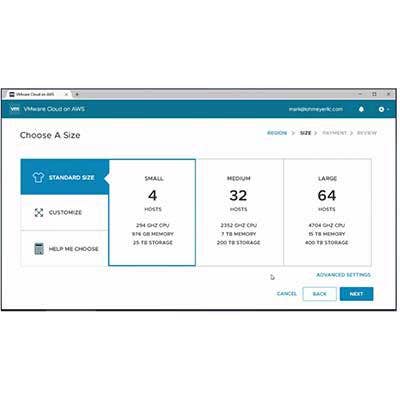
The Example
For the demonstration, Lohmeyer said to think of a U.S.-based customer looking to expand operations into Europe, but does not yet have a data center there.
He showed how a customer could click on a particular region--Ireland, in this case--and then click on a recommended standard configuration good for either four, 32, or 64 hosts, which come with fixed processor, memory and storage configurations. Next, the customer can choose whether to pay for the service hourly or via a one-year or three-year reserved fashion.
Customers can choose to pay for the service via credit card, Lohmeyer said. "But one of the really powerful things about this service is that, because its delivered, sold, and supported by VMware, our customers can take advantage of their existing commercial relationships with VMware to purchase this service, as well as take advantage of their existing relationships with certified channel partners," he said.
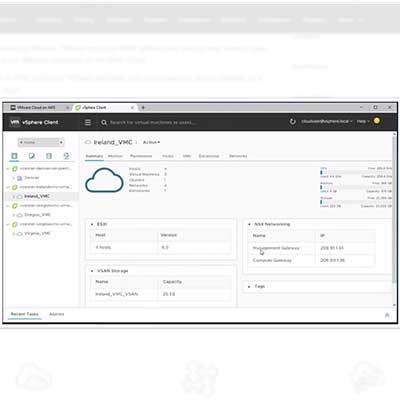
Using VMware Tools In AWS
Wood said that VMware customers could use the same VMware tools and software they already use while working with AWS.
"It's really important that we were able to bring the full VMware stack: vSphere, VSAN, NSX, and their own hypervisor running natively on bare-metal instances on AWS," he said. "This provides all the features customers love about VMware with all the elasticity and security that customers have come to expect from AWS."
Lohmeyer showed how vSphere can manage the ESXi compute, VSAN storage, and NSX networking capabilities on AWS. He also showed how, with a couple of clicks, an on-premises workload, and all its policies can be migrated to the AWS cloud using vMotion.
"Not only is it moving that application without any re-platforming of the application or the customer having to write a single new line of code, but because it's using vMotion, it's continuing to provide service to the customer, to the end user, literally while it's moving," he said.
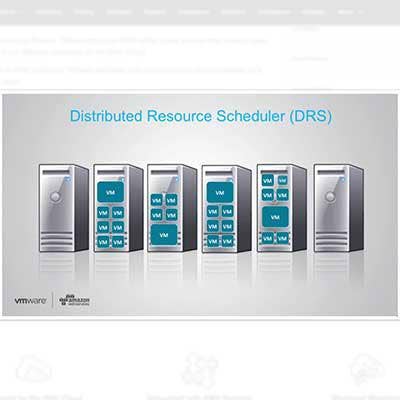
Looking Forward
In addition to showing how existing VMware solutions work on AWS, Lohmeyer also offered a technology preview of a new capability called Elastic DRS, or Elastic Distributed Resource Scheduler.
DRS in its original form distributes virtual machines across multiple hosts to ensure the best performance. With Elastic DRS, Lohmeyer said, VMware can also take advantage of the elastic resources provided by AWS to distribute virtual machines to the cloud as needed to automatically rebalance workloads without the need for new hardware.
"We've taken something that used to take weeks or months in a traditional on-prem environment down to a few months based on policy on top of the great AWS platform," he said.
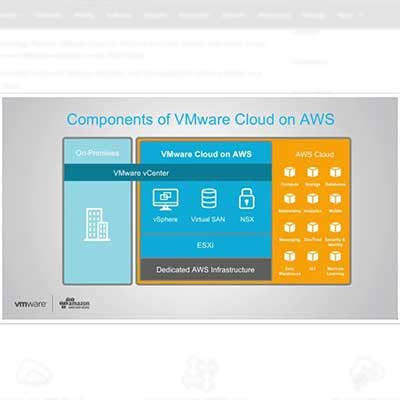
Taking Advantage Of AWS' Services With VMware
Wood said customers like AWS because of the broad and deep functionality they can take advantage of over 70 different services. Virtual machines running on VMware Cloud on AWS via EC2 can take advantage of those services.
"So if they want to access data which is stored in a Simple Storage Service, if they want to run queries against an enterprise-grade data warehouse, if they want to be able to run relational and non-relational low-latency databases, all of that is wrapped up and available in the AWS cloud."